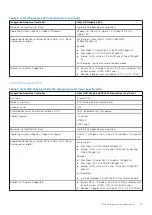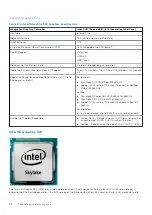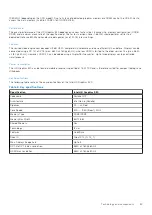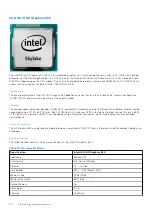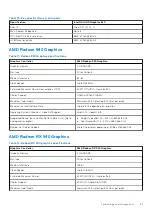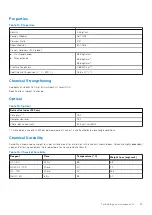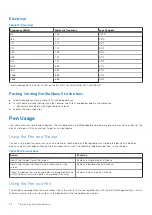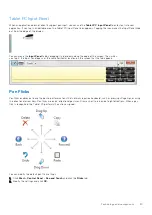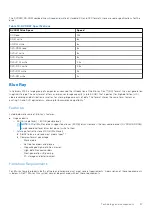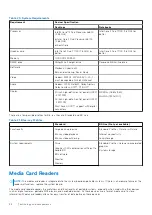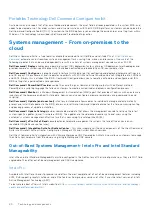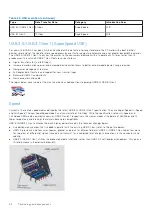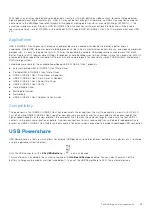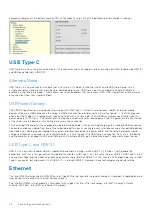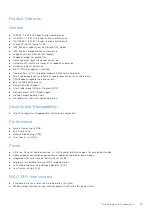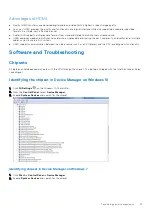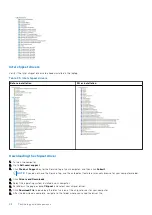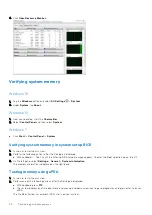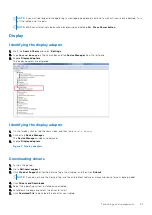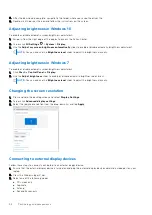
A unique and new Dell Remote Provisioning feature for Intel vPro quickly activates vPro capabilities on a PC, reducing vPro
set-up time from months to less than an hour. The Dell Remote Provisioning feature for Intel vPro is available as a part of the
module:
Dell Command | Integration Suite for Systems Center
Intel Standard Manageability (ISM)
ISM offers a limited set of out-of-band features like remote power on/off, Serial-over-LAN redirect, Wake-on-LAN, etc.
To learn more about Intel ISM, visit Intel's website at:
https://software.intel.com/en-us/blogs/2009/03/27/what-is-standard-
Trusted Platform Module
Trusted Platform Module (TPM) is a dedicated cryptoprocessor designed to secure hardware by integrating cryptographic keys
into devices. A software can use a Trusted Platform Module to authenticate hardware devices. As each TPM chip has a unique
and secret RSA key burned in as it is produced, it can perform the platform authentication.
NOTE:
Trusted Platform Module (TPM) is part of the system board. In an event of system board replacement, the
encryption needs to be suspended in the OS and re-enabled on new system board's BIOS prior to resuming the encryption.
CAUTION:
Attempt to replace the system board without prior suspending the encryption, will cause operating
system corruption and may eventually lead to No-Boot scenario.
Fingerprint Reader
This topic explains the software used in fingerprint reader
The Portables Technology has an integrated fingerprint reader located on the palm rest to the right of the touch pad. The
fingerprint reader is an option, so not all systems have it. Included with the driver for the fingerprint reader is a software
package from Dell ControlVault, that provides functionality for the device. Dell provides all support for the software, same as on
the Latitude systems.
Dell ControlVault Software
The software package for the fingerprint reader is ControlVault by Dell. It provides the following functionality to the fingerprint
reader:
●
Uses the fingerprint reader for Windows® logon and system start-up password authentication
●
Registers websites and Windows applications for password replacement
●
Launches a favorite application with a finger swipe
●
Stores confidential information in an encrypted folder
To gain any of this functionality, a user must first enroll fingerprints. An easy-to-follow wizard guides the user through the
enrollment process. The user can choose to save fingerprints to the hard drive or the fingerprint reader
NOTE:
A user should enroll more than one finger's print.
USB features
Universal Serial Bus, or USB, was introduced in 1996. It dramatically simplified the connection between host computers and
peripheral devices like mice, keyboards, external drivers, and printers.
Table 22. USB evolution
Type
Data Transfer Rate
Category
Introduction Year
USB 2.0
480 Mbps
High Speed
2000
Technology and components
41

